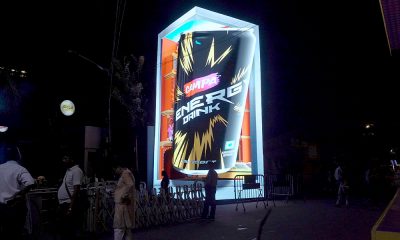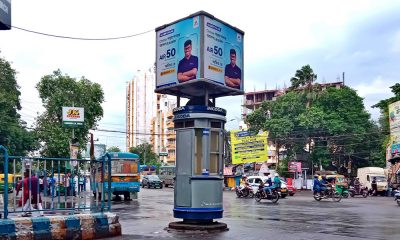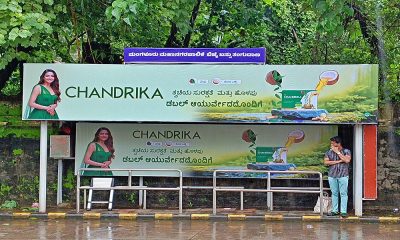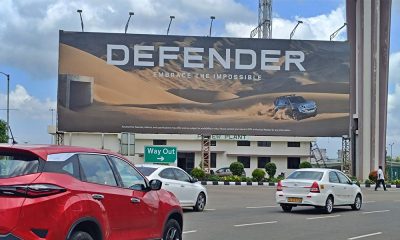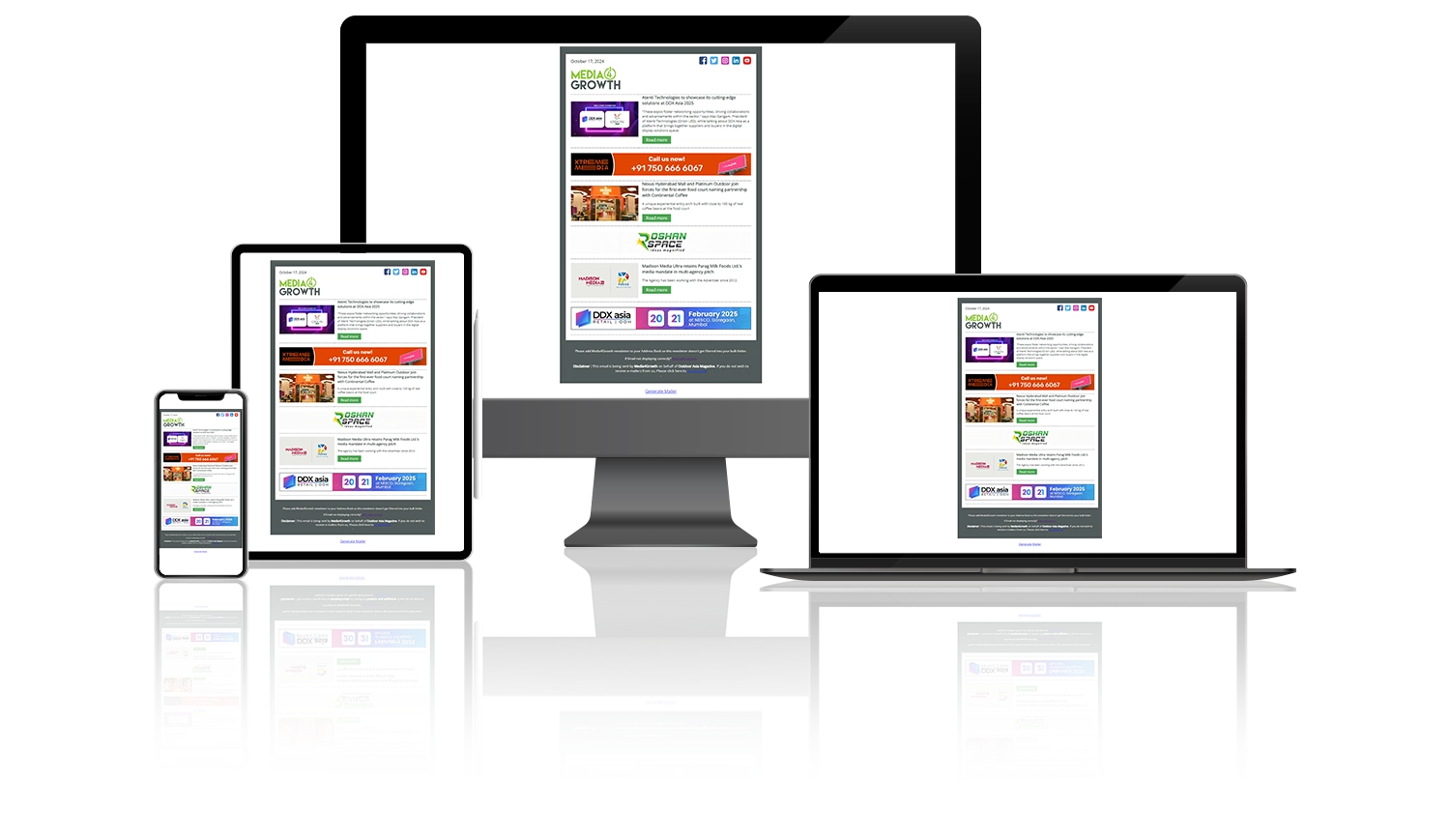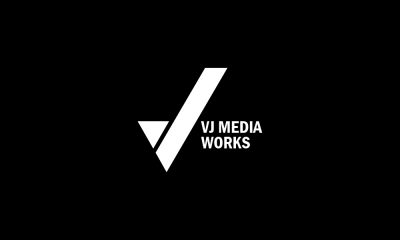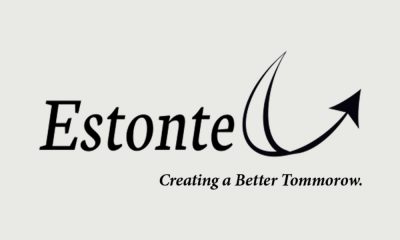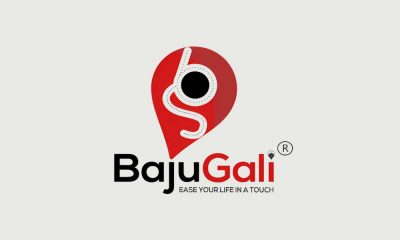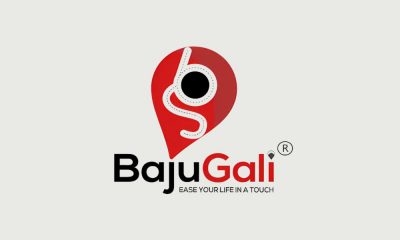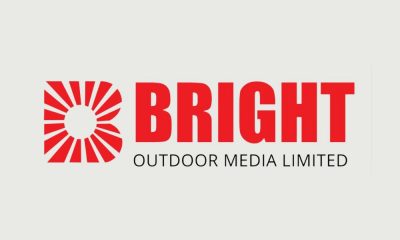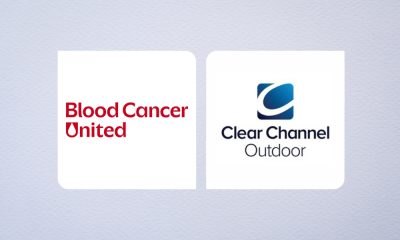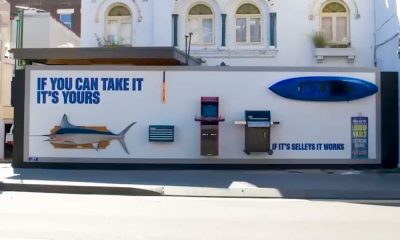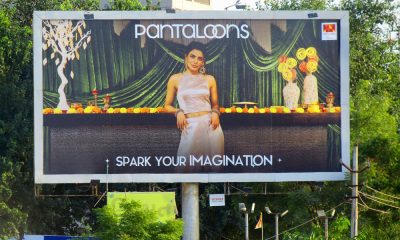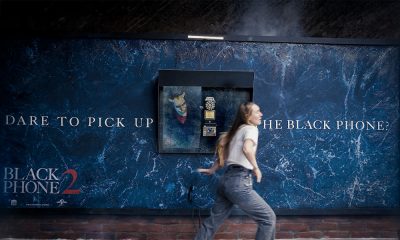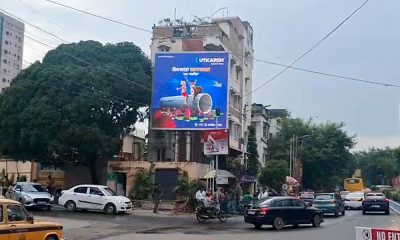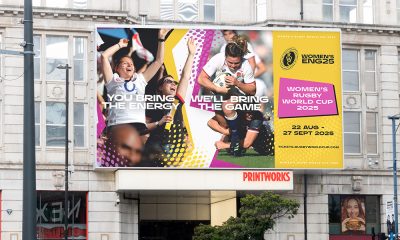Industry News
Mumbai OOH: The New Maximum
The Maximum City is seeing a new OOH landscape unravel as varied DOOH formats take positions alongside the larger-than-life traditional media, providing the advertising brands with a compelling bouquet of outdoor media options. Aayush Mohanan captures the insightful observations shared by leading Mumbai OOH media owners.
Mumbai, the city that never sleeps, is now wide awake after the go-slow pandemic years. The financial capital of India has a population of well over 2 crore with lakhs of them in transit every day. This is perhaps why the city remains the largest OOH market in India, and it only seems to be growing.
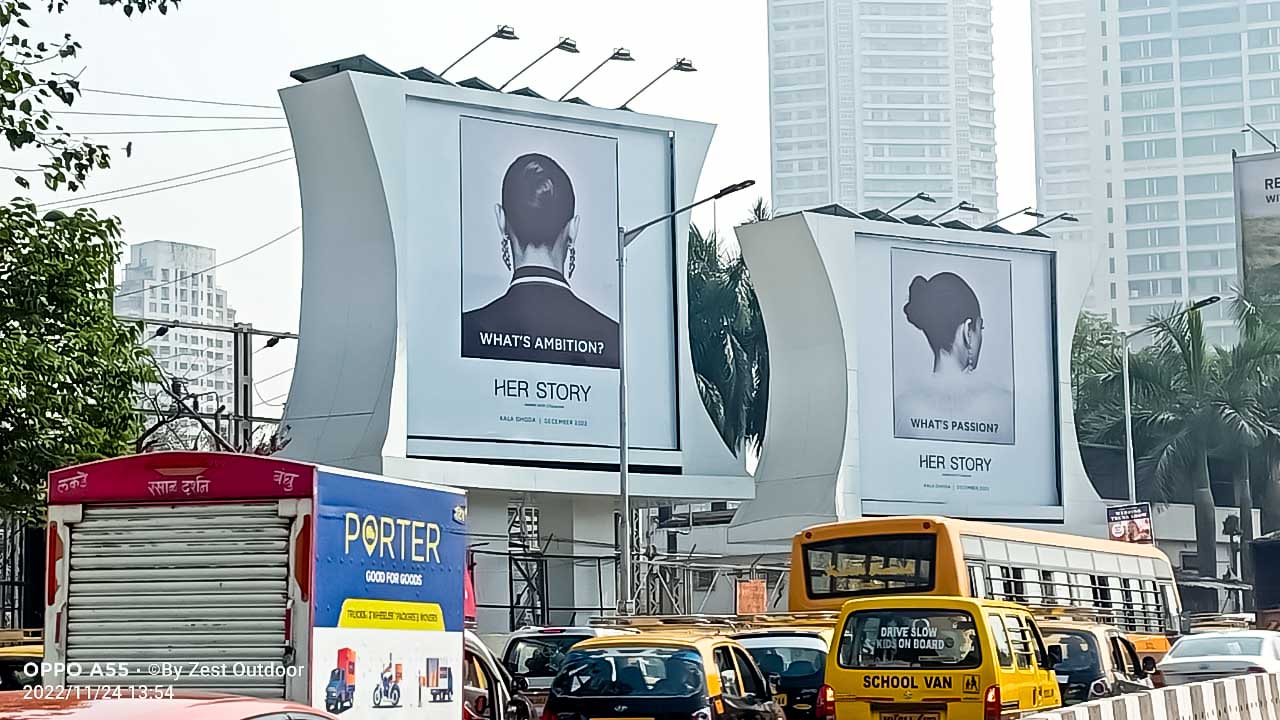
The city infrastructure is entering a transformative phase. Just last year, the Brihanmumbai Municipal Corporation (BMC) announced the Mumbai Beautification Project, a set of ₹.1,700 crore projects that is essentially a massive overhaul of the city’s infrastructure – a majority of which would include illumination work around the city – in order to enhance the living experience across Mumbai. And a part of these illumination projects will include the installation of DOOH assets across several strategic points across the city.
When we talk about Mumbai’s infrastructure, there’s no shortage of OOH advertising potential and it will only go up from here on. These are seemingly exciting times for OOH media owners as new infrastructure projects such as the expanded Mumbai Metro One network as well as new highways, such as the Mumbai-Nagpur expressway, are adding new dimensions to the OOH sphere. These developments are in turn are infusing greater confidence in brands to embrace outdoor advertising and increase their spends on this medium.
While DOOH investments are steadily picking up, the fundamental question remains – will the growth in media supply create a commensurate demand curve? Let us look at the larger-than-life roadside media, as a case in point.
What’s with roadside media?
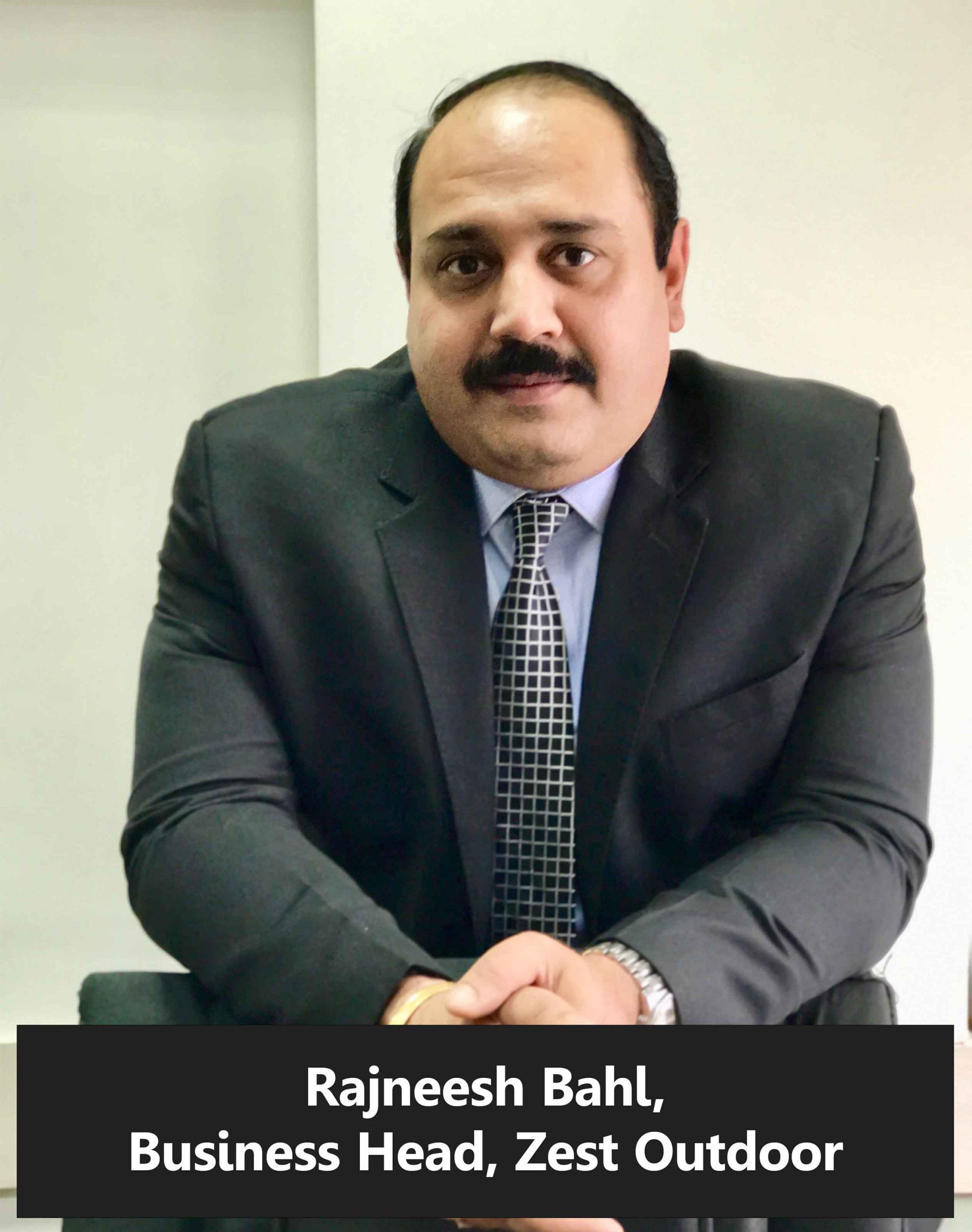
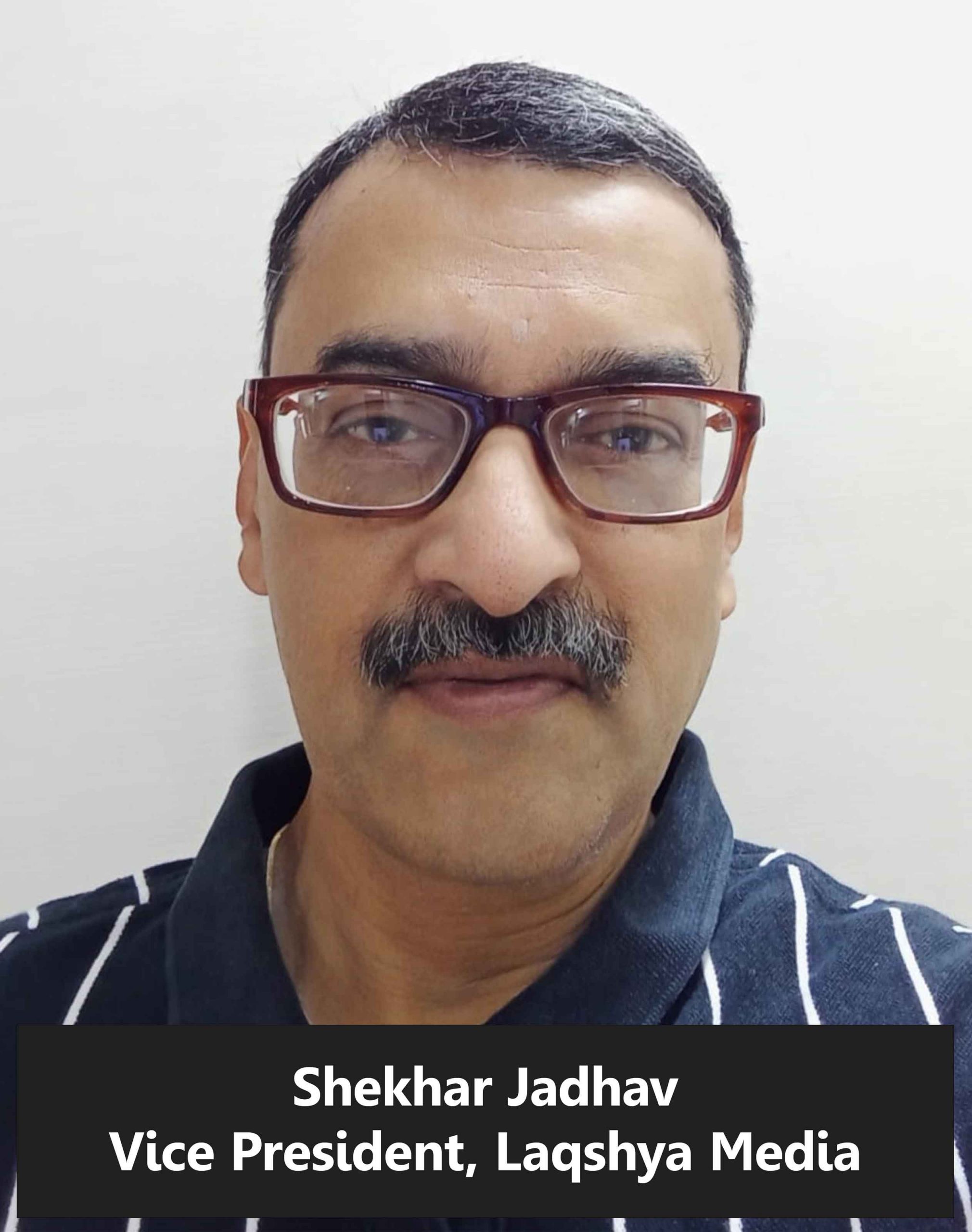 Given the size of the Mumbai OOH market, there is no shortage of players in the game. But, has the roadside media reached a point where an oversupply of media assets is creating a hurdle for new investments to come in? Rajneesh Bahl, Business Head, Zest Outdoor believes the more there are, the merrier. He says, “Competition is always better for the industry. It leads to innovation and helps bring about excitement for not only those within it but also for the brands”. Innovation in media assets, such as solar-powered billboards set up by Zest Outdoor are illustrative of the changing face of roadside media – the electricity generated from these billboards is being supplied directly to the Western Railway free of cost. Such innovations will also help break the clutter in the industry.
Given the size of the Mumbai OOH market, there is no shortage of players in the game. But, has the roadside media reached a point where an oversupply of media assets is creating a hurdle for new investments to come in? Rajneesh Bahl, Business Head, Zest Outdoor believes the more there are, the merrier. He says, “Competition is always better for the industry. It leads to innovation and helps bring about excitement for not only those within it but also for the brands”. Innovation in media assets, such as solar-powered billboards set up by Zest Outdoor are illustrative of the changing face of roadside media – the electricity generated from these billboards is being supplied directly to the Western Railway free of cost. Such innovations will also help break the clutter in the industry.
Shekhar Jadhav, Vice President, Laqshya Media, opines that there is no oversupply of OOH media in Mumbai. “Rather, there is huge scope for investment in OOH media as major infrastructure projects are being planned for the city, like the Metro network, coastal freeway, etc.,” he reckons while adding that the Mumbai market accounts for 40% of the industry size in the country, “and it’ll keep growing with the industry’s growth”.
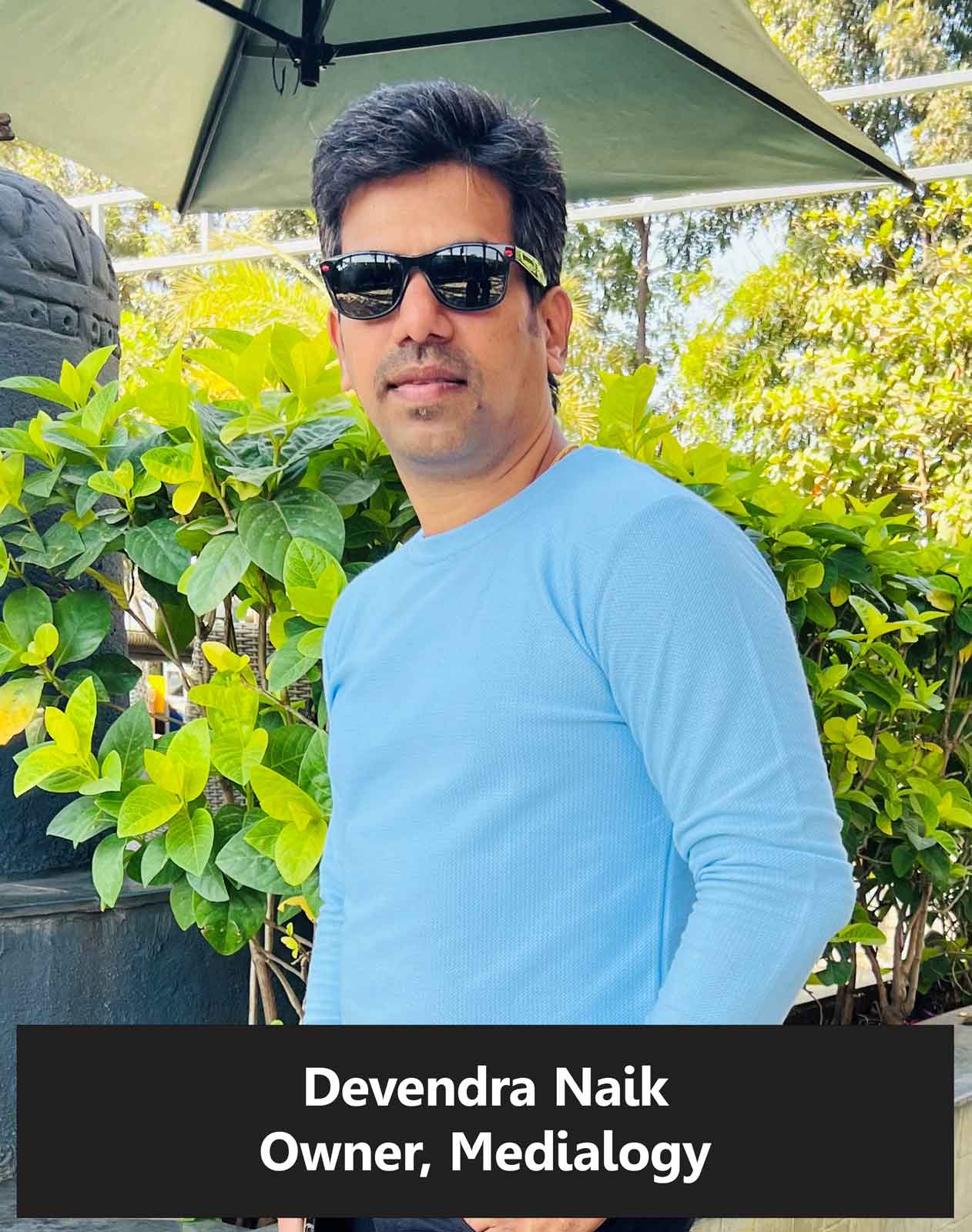 According to Devendra Naik, Owner, Medialogy there is scope for growth, but that growth needs to be controlled in order to preserve the value of business. “Earlier there were limited hoardings and billboards, which is why their value was high. So, while there is scope for OOH media to grow, it should be monitored, else a clutter of media assets will devalue the ads and not attract enough eyeballs”.
According to Devendra Naik, Owner, Medialogy there is scope for growth, but that growth needs to be controlled in order to preserve the value of business. “Earlier there were limited hoardings and billboards, which is why their value was high. So, while there is scope for OOH media to grow, it should be monitored, else a clutter of media assets will devalue the ads and not attract enough eyeballs”.
When we talk about disruption in the OOH industry, traditional media assets have witnessed a sense of remodelling with the rise of DOOH assets. These assets provide a sense of dynamism and life to advertisements that may not be delivered through traditional large formats. However, it is unlikely that they will replace the static large formats primarily because it’s not practical to have way too many digital billboards across the city. DOOH sites add significant operational costs for the media owners.
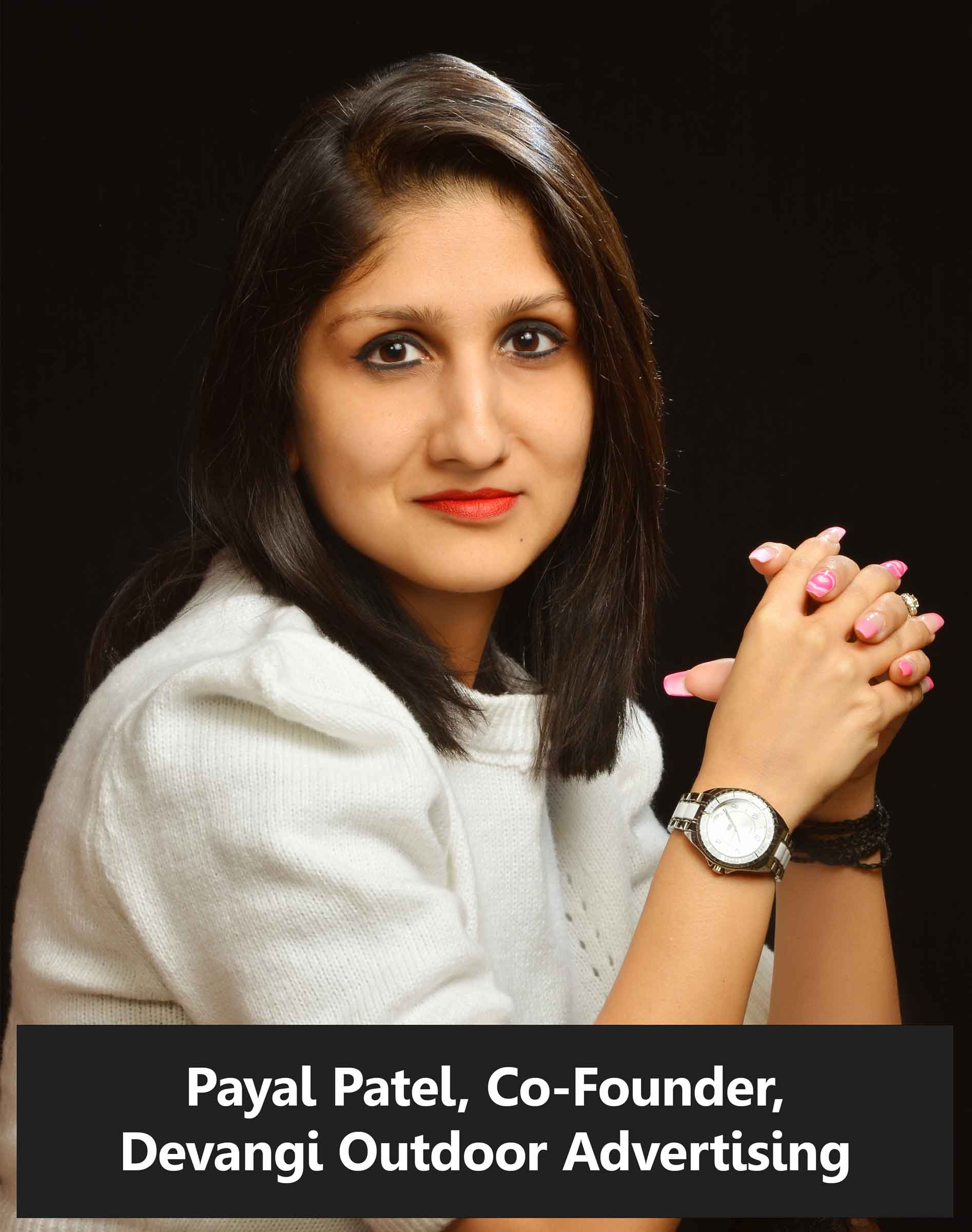 On DOOH, Payal Patel, Co-founder, Devangi Outdoor Advertising points out that while DOOH will not replace the traditional OOH assets, the ratio will definitely change. “In January, there were 15 screens all over Mumbai and in February that number went up to 45 – that’s a 300% increase within a month. There are around 150 media owners in the city, and at least 25 of them wish to put up digital billboards”.
On DOOH, Payal Patel, Co-founder, Devangi Outdoor Advertising points out that while DOOH will not replace the traditional OOH assets, the ratio will definitely change. “In January, there were 15 screens all over Mumbai and in February that number went up to 45 – that’s a 300% increase within a month. There are around 150 media owners in the city, and at least 25 of them wish to put up digital billboards”.
Elaborating on this, Shekhar Jadhav says that DOOH is growing and has also penetrated from ambient space to outdoor sites. “But it can’t take the place of traditional large formats on Mumbai streets. Both formats will co-exist, but traditional media will have a much bigger and more dominant share than digital OOH”.
“It’s ultimately a question of demand and supply,” says Geetika Gulati, Director, Alakh 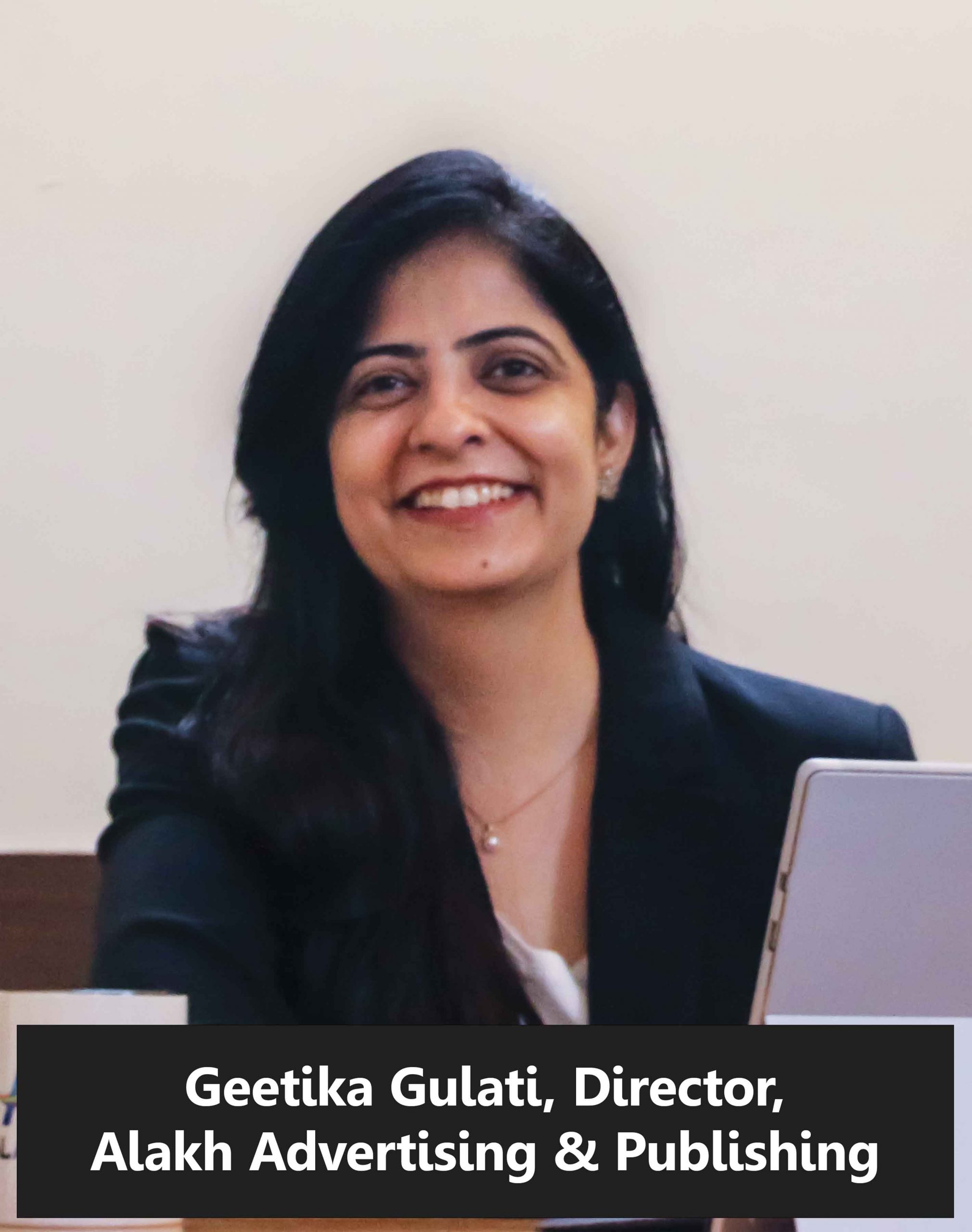
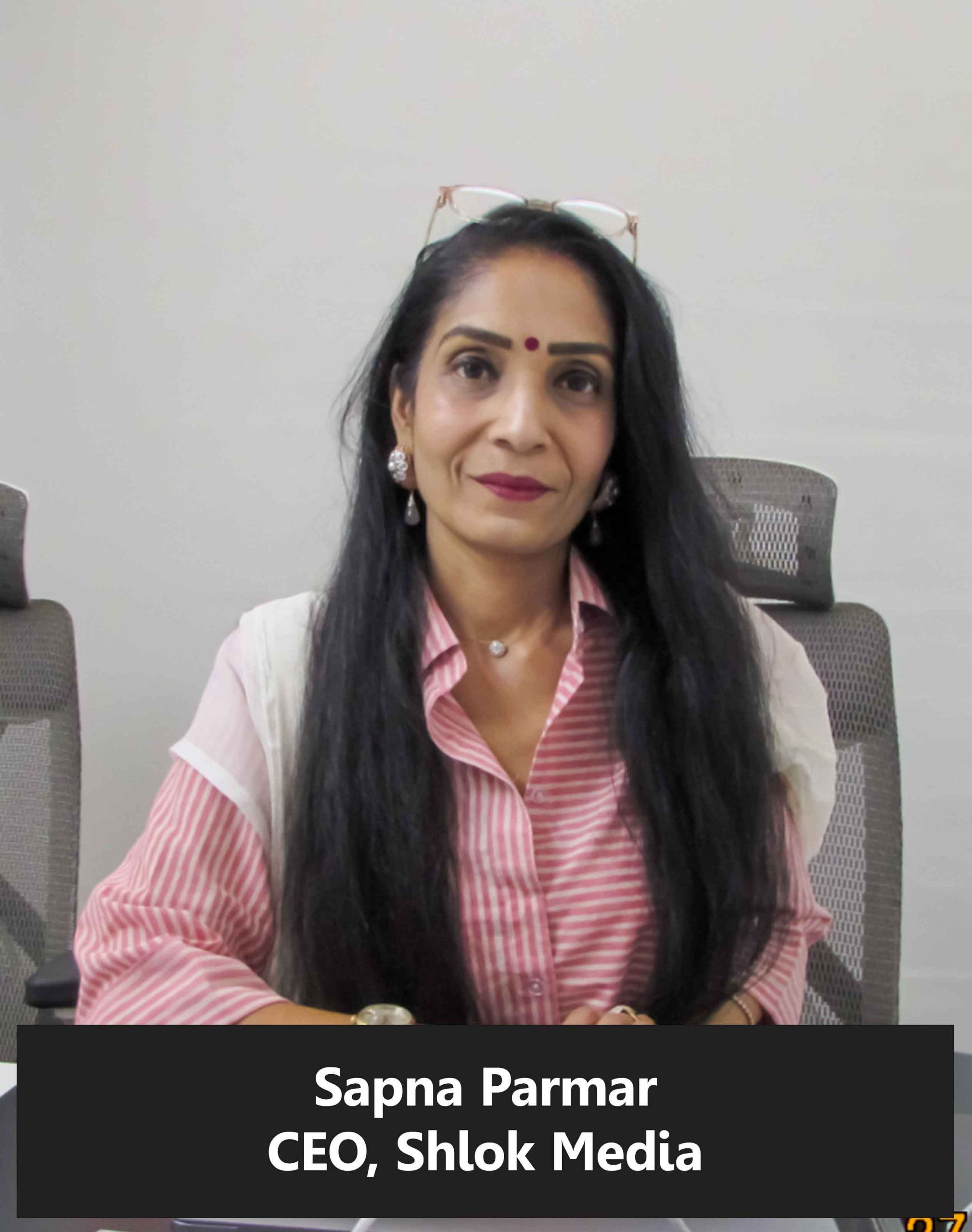 Advertising & Publicity. “If you have 10 digital screens, you can play up to 60 ads on it, but is there a demand for those many ads in the same location? That’s the fundamental question. I think that both mediums will co-exist because the static billboards will always have their own charm and place in the clients’ minds”.
Advertising & Publicity. “If you have 10 digital screens, you can play up to 60 ads on it, but is there a demand for those many ads in the same location? That’s the fundamental question. I think that both mediums will co-exist because the static billboards will always have their own charm and place in the clients’ minds”.
Sharing the sentiment, Sapna Parmar, CEO, Shlok Media says, “Certain clients, such as OTT platforms, movies, builders, etc. are keen on DOOH advertising, but some segments, such as retail brands are less enthusiastic about it because the DOOH screens offer some six slots for ads and in the window that somebody passes the screen, their brand may not be the one being displayed. But there will be clientele for both formats”.
While there may be a clutter of media assets in the city, there is a sense of excitement from brands for the OOH medium and novel assets such as the DOOH, are keeping this enthusiasm steady.
In any city, the municipal body plays a vital role in the development and growth of the OOH industry, and of course, Mumbai is no exception to that. The BMC is being seen as a major force behind the new DOOH renaissance that Mumbai is experiencing.
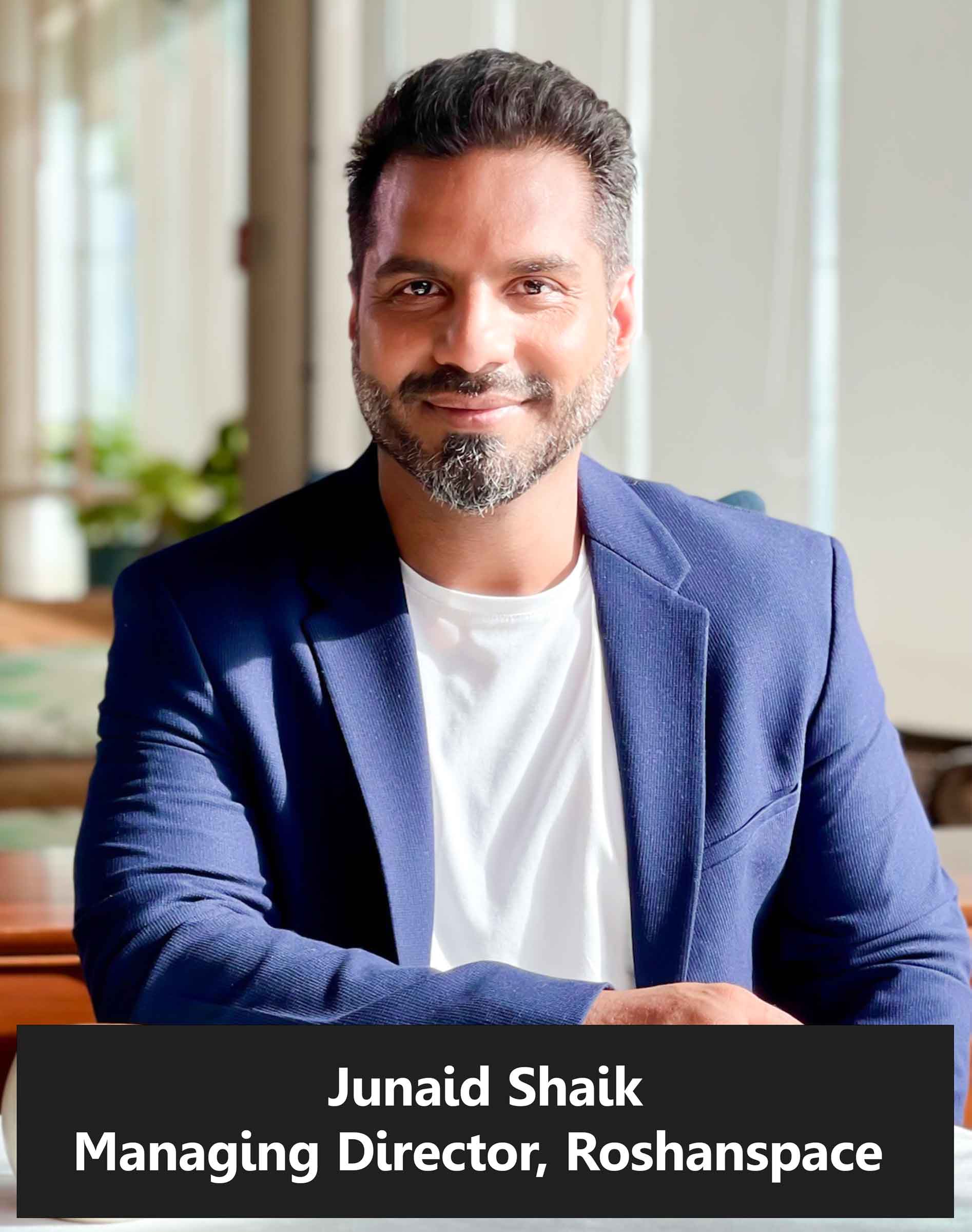 However, some in the industry still feel that there are areas to be worked upon. On this, Devendra says, “One issue that the BMC needs to address is the planting of trees in the city. There are several billboards that are obstructed by the trees in front of them. This reduces the ads’ value and also seems unfair as the BMC is still charging a licensing fee on those sites to the owners. I believe that nature and business should both thrive. However, one should not obstruct the other. And the current rule of having 70 meters between billboards needs to be amended and increased to at least 100-120 meters because there is a clutter of media assets”.
However, some in the industry still feel that there are areas to be worked upon. On this, Devendra says, “One issue that the BMC needs to address is the planting of trees in the city. There are several billboards that are obstructed by the trees in front of them. This reduces the ads’ value and also seems unfair as the BMC is still charging a licensing fee on those sites to the owners. I believe that nature and business should both thrive. However, one should not obstruct the other. And the current rule of having 70 meters between billboards needs to be amended and increased to at least 100-120 meters because there is a clutter of media assets”.
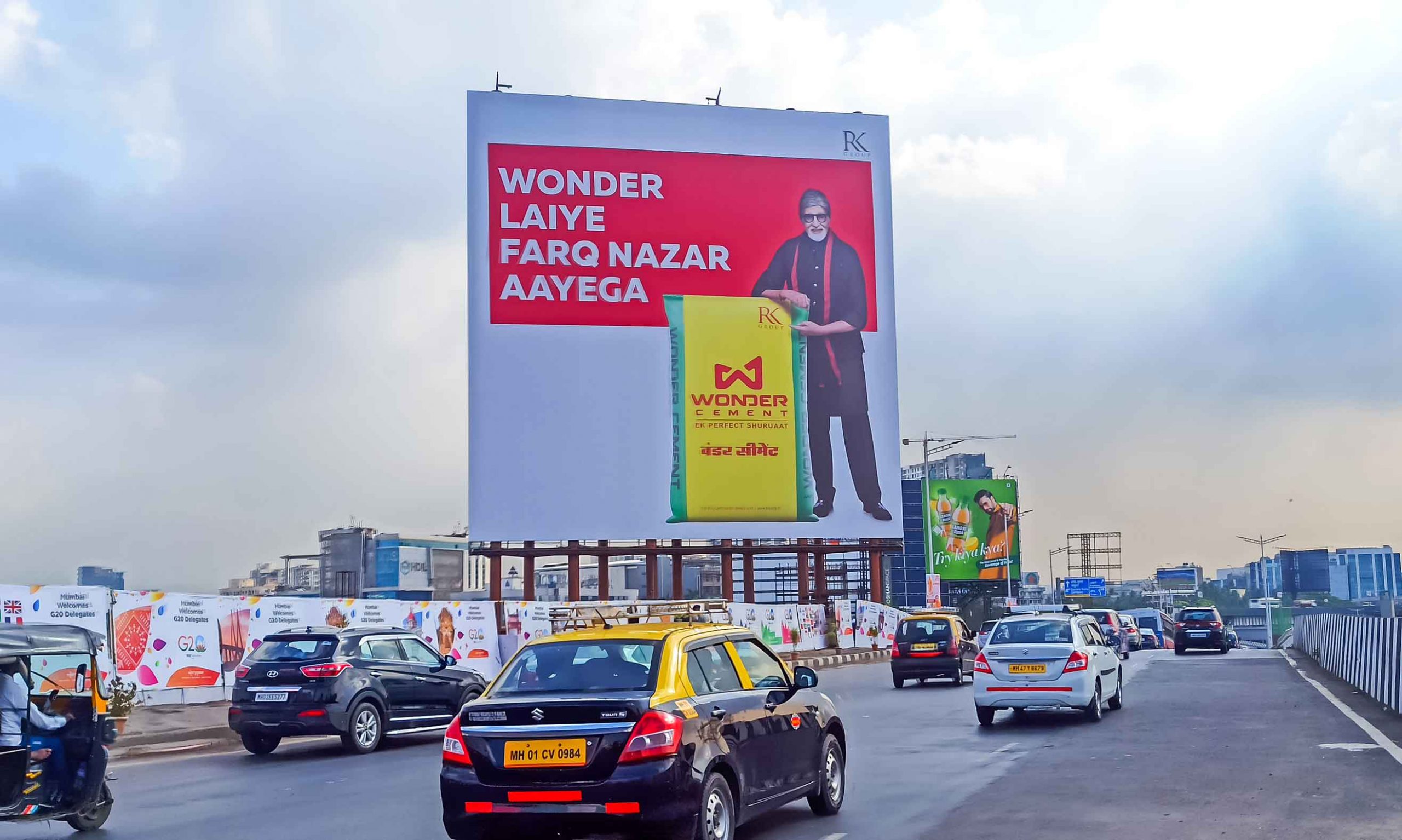
Adding to this, Junaid Shaik, Managing Director, Roshanspace says, “Less is more. We have examples of huge markets where they have focused on OOH becoming a part of beautification and public welfare. And they have generated incremental revenues while adding to the aesthetics and experience of living in the city”.
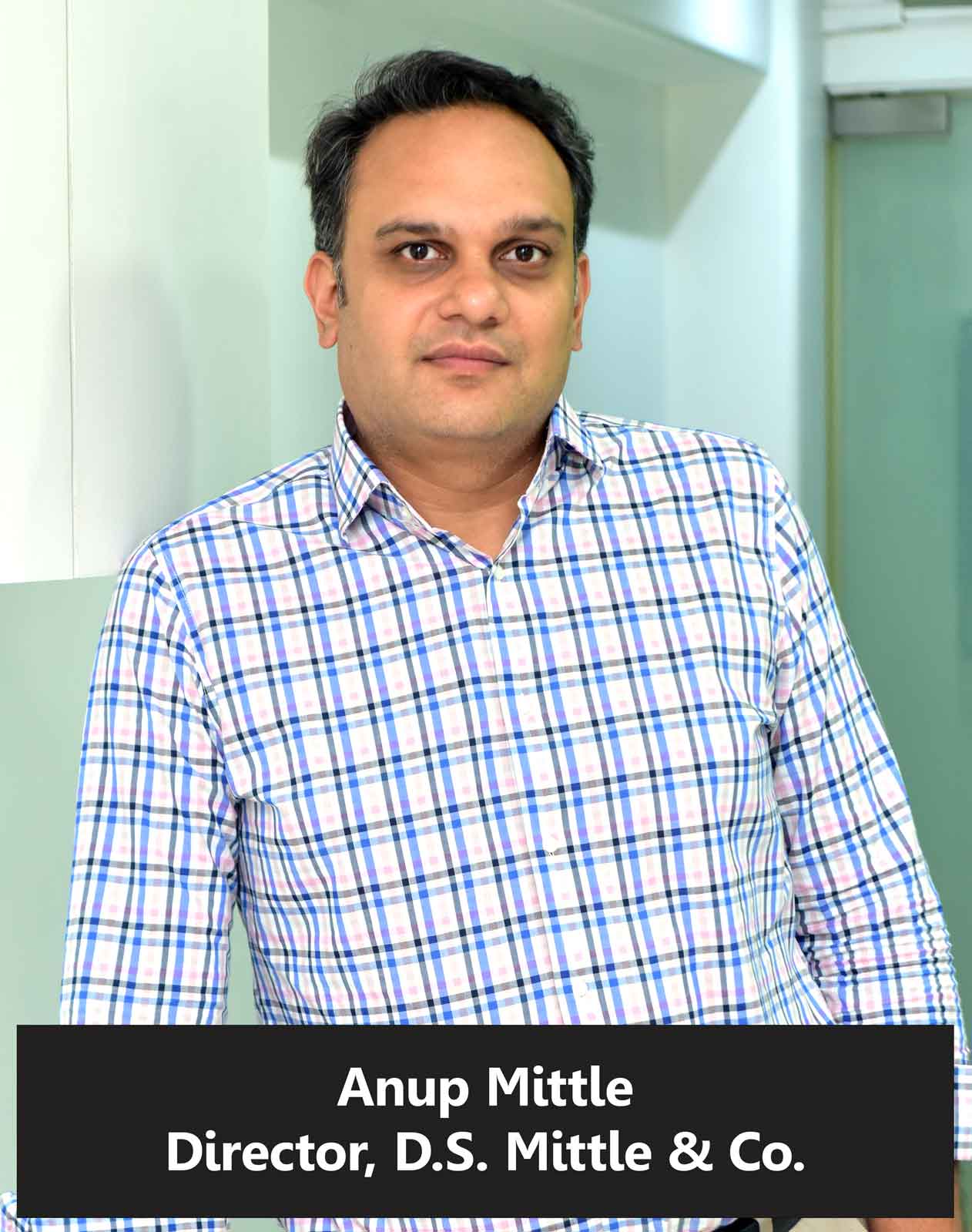 Evolving Brand Sentiments
Evolving Brand Sentiments
While digital marketing ruled supreme during the COVID-era, the pandemic is well and truly behind and this is evident by the heavy footfall that public spaces in Mumbai are experiencing. While the assets are aplenty, the OOH growth is determined by the sentiment of the brands towards the medium. Speaking on the relationship between brands and OOH media, Anup Mittle, Director, D.S. Mittle & Co. says, “Many new brands have started opting for OOH medium along with the mainline media for their campaigns. These clients have also included OOH medium in their yearly advertising spends which are good signs for media owners and agencies. The overall industry spends have increased and so has the media occupancy. Media occupancy has been surging over the last one year. The after-effects of COVID have diminished and the market sentiments are on all-time high. This trend has to continue in the coming months for industry to be stable and grow”.
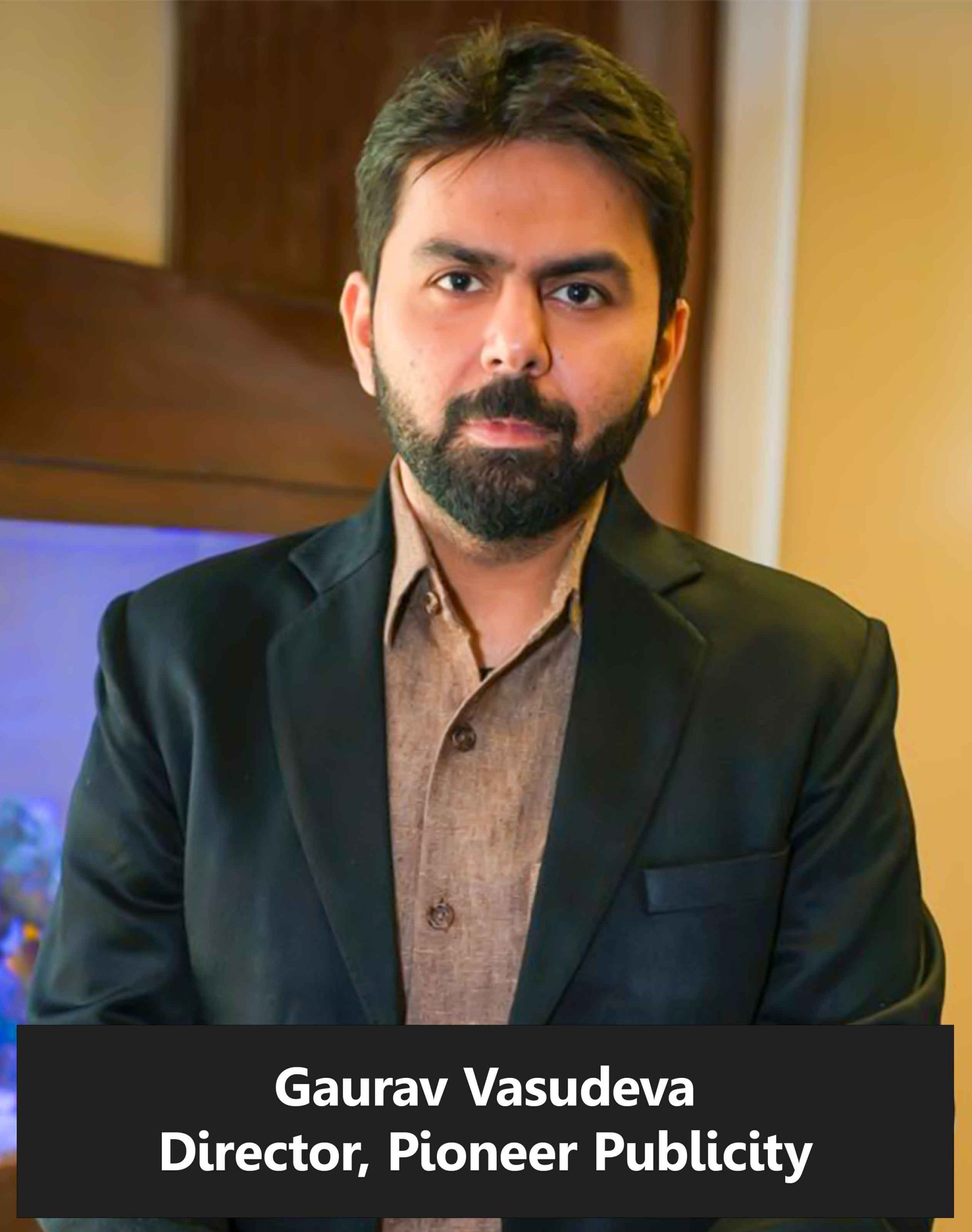
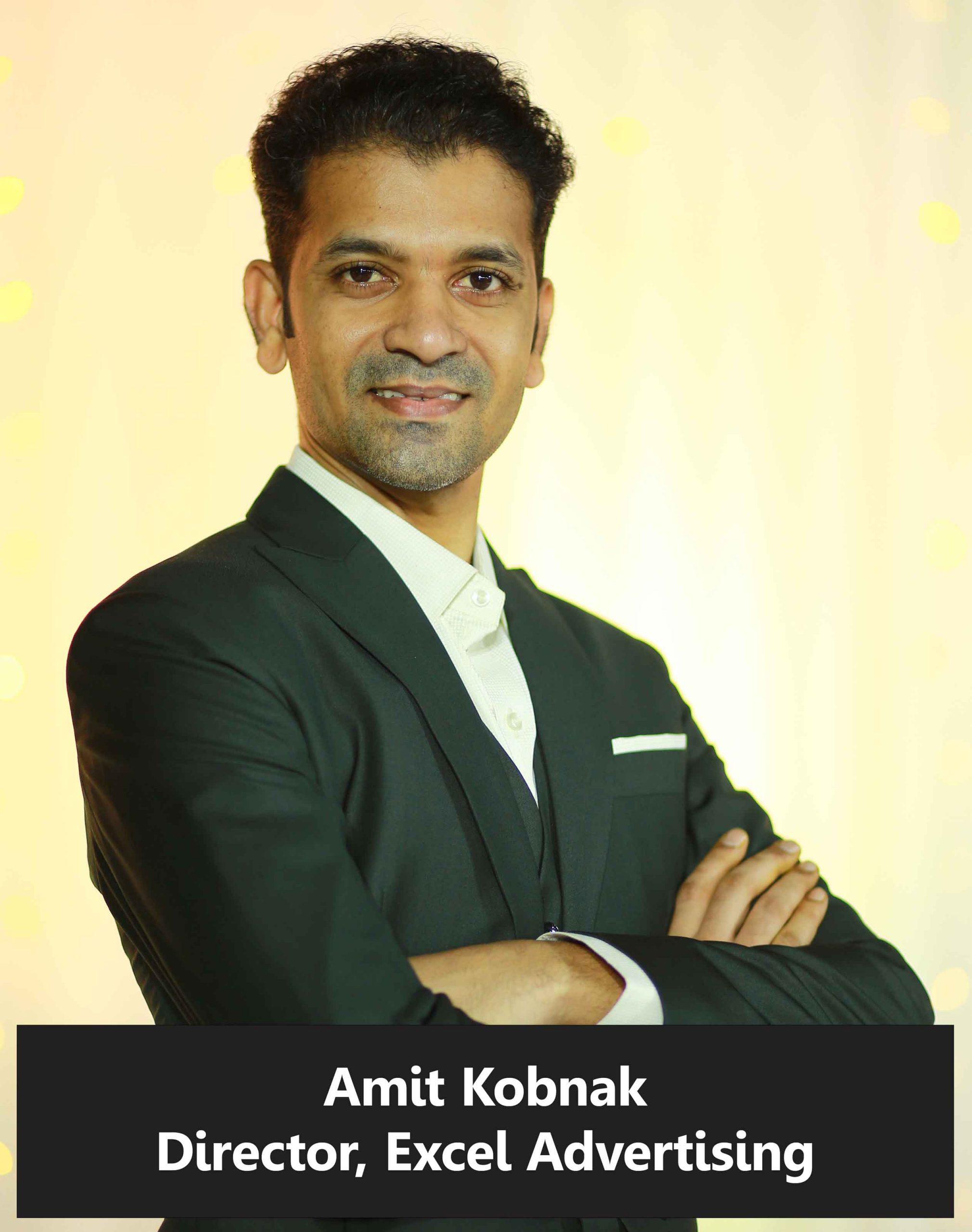 On a similar wavelength, Gaurav Vasudeva, Director, Pioneer Publicity, says, “More brands have started to use OOH as an advertising platform as they see the appeal in a larger-than-life format”. When speaking about the occupancy levels in the city, Amit Kobnak, Director, Excel Advertising, says that “the average occupancy levels are about 70-80% which, in my opinion, is a healthy number and this rises to 100% during the festive season. The current financial year has been a great time for OOH advertising”.
On a similar wavelength, Gaurav Vasudeva, Director, Pioneer Publicity, says, “More brands have started to use OOH as an advertising platform as they see the appeal in a larger-than-life format”. When speaking about the occupancy levels in the city, Amit Kobnak, Director, Excel Advertising, says that “the average occupancy levels are about 70-80% which, in my opinion, is a healthy number and this rises to 100% during the festive season. The current financial year has been a great time for OOH advertising”.
However, Shekhar Jadhav provides a counterpoint that while new brands are definitely advertising in the city, a few national brands are now not seen on the city’s OOH canvas. “Occupancy level has been good and close to even 70%, but we are yet to touch the pre-Covid numbers”. The media owning arm of Laqshya Media receives 60%-70% of business in Mumbai from agencies and the remaining directly from clients, he explains.
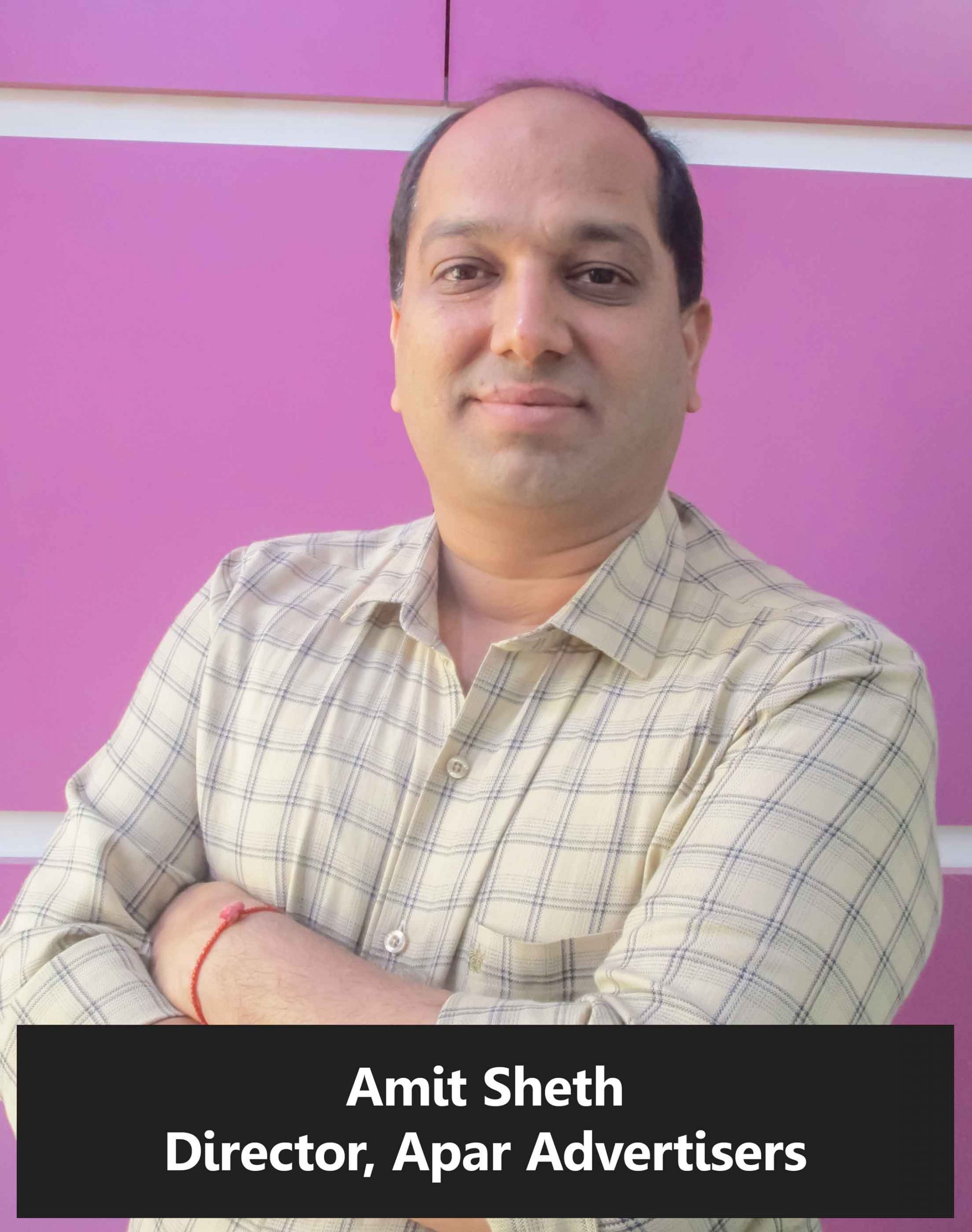
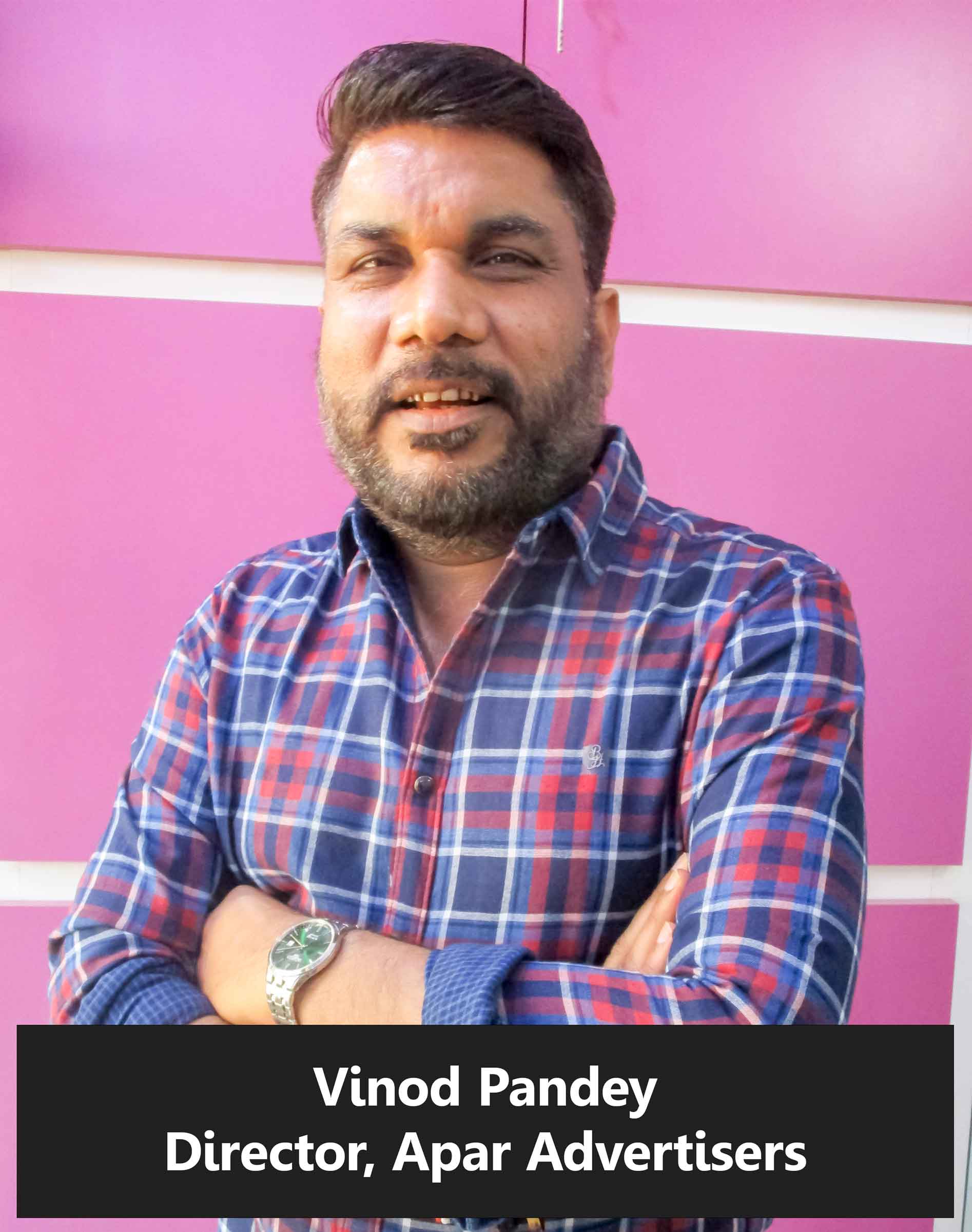 With an increasing number of brands embracing outdoor advertising, are brands likely to approach media owners directly rather than go through a specialised agency? While, more brands are approaching owners directly, a large number of them still prefer to work via agencies. Amit Sheth and Vinod Pandey, Directors, Apar Advertisers, “We work with clients directly as well as with the agencies. But most brands come to us through the latter. Even in the future, brands will come to us via agencies and it’s because they have their pitching modes which integrate OOH campaigns with other media, such as print, TV, etc.”.
With an increasing number of brands embracing outdoor advertising, are brands likely to approach media owners directly rather than go through a specialised agency? While, more brands are approaching owners directly, a large number of them still prefer to work via agencies. Amit Sheth and Vinod Pandey, Directors, Apar Advertisers, “We work with clients directly as well as with the agencies. But most brands come to us through the latter. Even in the future, brands will come to us via agencies and it’s because they have their pitching modes which integrate OOH campaigns with other media, such as print, TV, etc.”.
It is important to note that market trends do not necessarily define or alter business practices. Several brands have been associated with their agencies for a while and they wish to maintain that professional relationship. Interestingly, Sapna Parmar has a different take on the matter, “In my experience, I have learnt that direct clients are one’s bread and butter in this industry – their enthusiasm about OOH is essential to the growth of the industry. As a result, I have been concentrating my efforts on building a base of direct clients”.
Technology and Market Value
The primary reason that makes digital marketing so attractive for brands is simple – data. The ability to measure the impact of one’s ad campaigns coupled with audience metrics is a massive advantage that helps brands reach a larger audience, and moreover the right audience. On the other hand, the lack of metrics and tools has always been a major constraint when it comes to outdoor advertising.
But times are changing and the technology revolution is finally coming to the outdoor space as well. With adtech, targeting, measurement, and higher ad engagements are very much possible, as is evident in OOH markets such as Europe and North America.
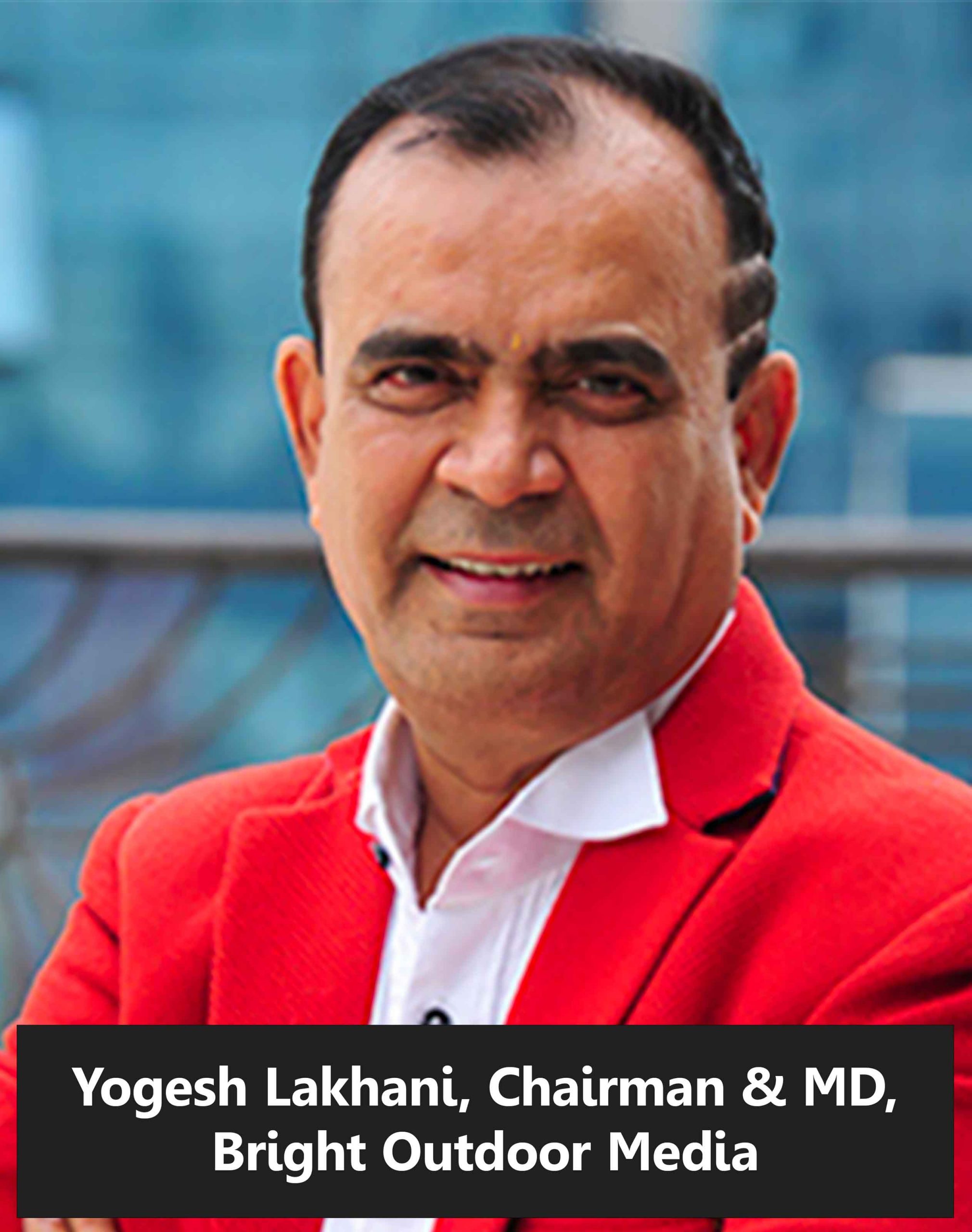 Considering the size of the Mumbai OOH market, it’s a reasonable assumption that such technologies would first make waves here. Now, only question remains – when.
Considering the size of the Mumbai OOH market, it’s a reasonable assumption that such technologies would first make waves here. Now, only question remains – when.
Aligned with this thought, Dr. Yogesh Lakhani, Founder, Bright Outdoor Media says, “We are taking the required steps to initiate changes. With our recently launched IPO, our intention was to collect funds and get the best technology to our clients. We are prepared with our 5-year plan to acquire new technology in order to give the best to our clients”.
These technological advancements not only provide media owners and brands with more sophisticated tools, but they also help enhance the overall OOH market value. Even though Mumbai is already India’s largest market, there is still scope for immense growth.
Rajneesh Bahl says, “I think the size of the Mumbai OOH market could be around Rs 600-700 crores. With new infrastructure such as the metro coming in, there is immense potential for growth and I believe that Mumbai OOH could grow by around 15%-20%”.
Shekhar Jadhav states that Laqshya Media Group is definitely the leader in using the technology in OOH. “We were the first company to execute 3D Anamorphic display in India. We did it for Tanishq. After that, many, more technology-based displays have been developed and executed for a number of clients, including Marriott, G-20, Ministry of Environment and Indian Oil- where we employed 5 state of the art technologies for display and innovation. It was widely appreciated.”
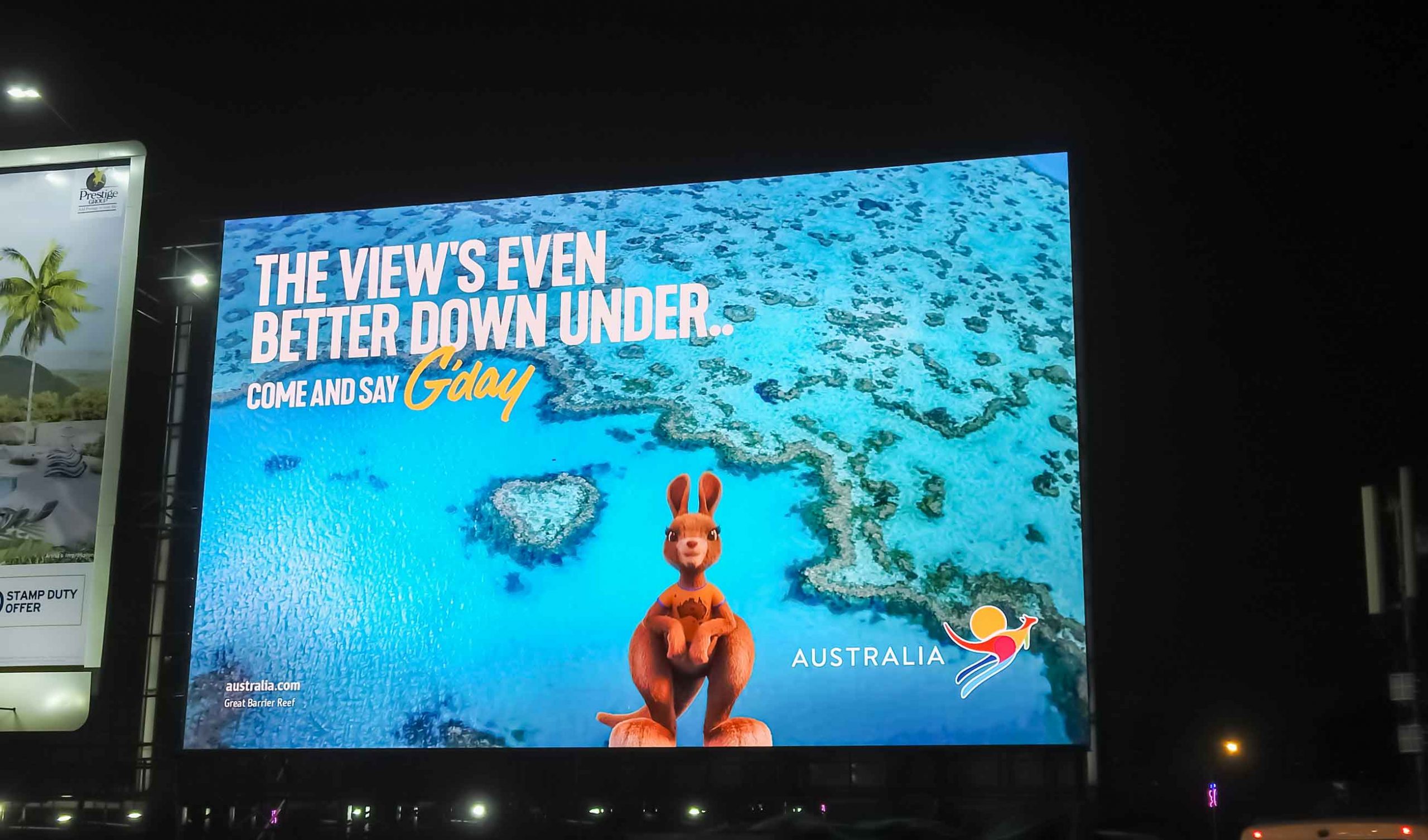
Looking Forward
A large OOH market like Mumbai offers myriad opportunities for media owners to take long-term bets on asset investments, introduce innovative media formats, embrace new technologies for crafting exciting brand and consumer experiences, and at the same time repose faith in a common currency.
Junaid Shaikh gives an insight: “The future of OOH in Mumbai will be driven by audience measurement, ad tech, increased interest in DOOH, upcoming infrastructure projects, OOH integrated into smart cities, and most importantly, a real engagement and dialogue with the policy makers, to regulate the industry even further”.
Adding to that, Shekhar Jadhav says that BMC has the responsibility to streamline and pave the way to augment OOH media at par with global standards. “Too many stakeholders are involved in Govt tenders; also, leave aside the private sites. Something that could be permissible for one concessionaire or zone is not permitted for some others.” He also points to the lack of incentives for media owners to invest in DOOH, where they are called upon to pay a premium on such assets.
There are still challenges galore, but the city that never sleeps is constantly re-imagining solutions to keep the growth gravy train moving, at a frenetic pace. If there is an OOH market that will embrace the latest OOH / DOOH trends, more likely it will be Mumbai.
-
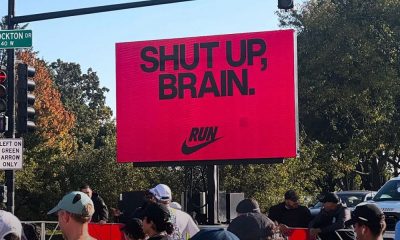
 Campaigns
CampaignsNike ignites Chicago marathon runners with motivational OOH campaign
-
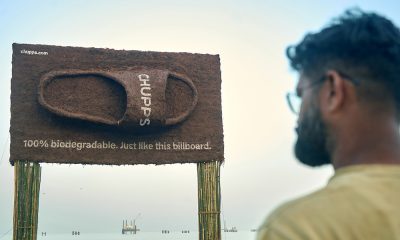
 Creative Concepts
Creative ConceptsMumbai gets a biodegradable billboard from Chupps Footwear
-
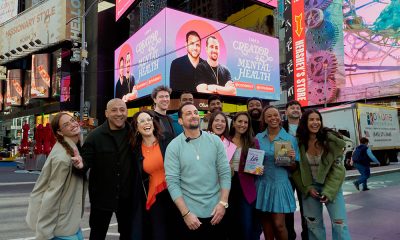
 Campaigns
CampaignsTimes square billboard lights up for World Mental Health Day campaign
-
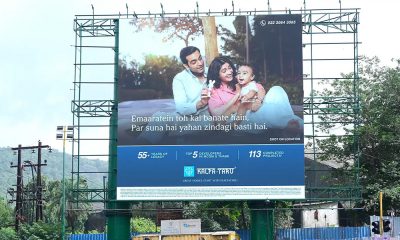
 Digital Display
Digital Display12 new Earth Series LED Screens illuminates Mumbai
